Budlei (Lat. Buddleja) or Buddedly - beautifully blooming shrub of the genus of flowering plants of a family of norichnikov. Budlei is widespread in many continents: in South Africa, Asia and America. The plant received his unusual name in honor of Botany - Anglicin Adam Buddla, who lived at the end of the 17th - at the beginning of the 18th centuries, it was he who opened Europe that was an original and beautiful plant.
Blossoming shrub to the autumn of beautiful closes of a variety of shades with small flowers with a sweetish honey smell. Beelenia very much resembles luxurious bunches of lilac, so it is often called autumn lilac.
Due to the attractiveness of the plant and his mounted fragrance for butterflies, bees and other insects at Budlenia, a lot of other interesting names: "Butterfly magnet", "Motilla".
One of the plants features - at the same time on the bush you can see the fruits of the plant, buds and open flowers.
Description Budleia
In nature, there are more than 100 varieties of shrubs. This attractive evergreen and deciduous plant with bright clusters can often be seen in urban squares, parks, flower beds, in garden sites. Externally, the shrub is similar to a lilac bush, a special similarity with lilac give gorgeous borders, consisting of extended inflorescences of 20-45 cm long, assembled in a panicle. Self-deception flowers themselves are small, tubular, separated by 4 shares, like lilac and have a wide color range: from snow-white, pastel-gentle tones to bright, juicy raspberry, lilac and orange shades. Budleia fruits look like elongated boxes with seeds and they appear simultaneously on inflorescences with flowers and buds.
The adult bush of Budleia reaches a height of up to 3 meters, but in the area where cold winters prevail, does not develop above 1-2 meters. The shape of the shrub-spready, the time of its flowering - from July to late autumn, depending on the type of plant variety. For prolonged flowering, bright juicy shades, empty forms of the bush, Buddlyeya loved the landscape designers. In most cases, the plant is planted singly to emphasize the attractiveness of a luxurious shrub shape. It is also used to create original autumn compositions with coniferous and perennial plants.
Budlea Types and varieties
There is a huge variety of breeding varieties and varieties, which are characterized by a height, shape of a bush, a variety of forms and colors of inflorescences and a duration of flowering.
Buddleja Davidi (Buddleja Davídii)
It is one of the most common variety of budielia for growing in areas with temperate climates. David's birthplace Budnyia is China. Budduda David prefers sunny places, open areas and terrain with well-drained soil. The height of the leafy shrub can reach from 2 to 3 meters in height. The variety is distinguished by the rapid growth of young shoots. The leaves have a lancing or oval lancing shape, pointed on the top, their length is 25 cm, the flowers have a purous color, the length of inflorescence is 40 cm. The flowering begins at the end of summer and lasts up to 1.5 to 2 months.
Among the varieties of Budleia David allocate varieties:
Budlei David Alba (Alba)
Rasky bush (up to 2 meters) with rapid growth. Inflorescences - white, in shape resemble a pyramid. A variety feature - the base of the flower has an orange color, sometimes the second name of the grade "orange eye" occurs. Flowering time - July-October.
Budlei David Royal Red (Royal Red RED)
Spacious shrub (up to 3 m in length) with very large bright inflorescences of purple color. The most attractive and fragrant variety, light-affilome, flowering time is the second half of the summer - the beginning of the autumn.
Belya David Orchid Beauty (Orchid Beauty)
A shrub with gentle pink-lilac inflorescences, in our climate reaches a height of no more than 1, 5 meters, blooms from August to September, it is good to carry trimming.
Belya David Arlequin (Harlequin)
Bulk shape shrubs with small inflorescences with a saturated blue-violet tint. Their length is no more than 30cm, the inflorescences are remarkable for cutting and beautifully look in bouquets. The light-affilome variety, not frosting, needs insulation in winter.
Belya David Black Knight (Black Knight)
Its name (in the translation "black knight") variety thanks to its colors - noble dark purple color, and in the flower inside the flower - a stain of an orange shade. The bush is tall, up to 3 meters high, perfectly carries out in southern latitudes and is not afraid of drought.
Budlei David Flower Power (Flower Power)
His homeland is considered China, the height of the bush reaches up to 2 meters. Inflorescences in the form of panicles reach lengths up to 30 cm, have a colorful bright color in purple-orange colors. Bright beautifully blooming shrub will decorate any garden or plot, bring bright colors and give an optimistic mood. The time of his flowering is up to 45 days, starts at the end of summer and continues until autumn. The variety feature is frost-resistant, easily tolerates harsh winters, distributed in the northern regions.
Japanese Budlei (Buddleja Japonica)
Motherland of Budleia - Japan. This species is not as common as David's buddha, but it is less attractive for gardeners. Its main feature is a rapid growth of the shrub and an unusual form of shoots with a four-granular cross section. The shrub has an empty shape, the inflorescences are small, up to 20 cm of gentle lilac shades. Japanese Budleya perfectly tolerate frosts, blooms in the late spring - early summer.
Buddlya Charov (Buddleja Globosa)
An unusual form of colors of inflorescences in the form of a bowl of bright yellow-orange shades give up a special charm. Very beautiful, but the capricious kind of budielia, possess an extraordinary tropical aroma, his homeland - Argentina. It grows only in the conditions of the greenhouse or the southern regions, since it does not tolerate frosty winters at all.
Buddeliya Laid (Buddleja Alternifolia)
The homeland of the sequential buddy is the northern regions of China, where it grows in the open area. The bush is tall, stretched, can grow up to 4 meters in height. Elegant shoots, long, lean to the earth itself, the inflorescences are located on them in the form of garlands. Flowers are very small pink and purple shades. During flowering, the flowers exude a gentle aroma of almonds. The difference of the species is the appearance of floral kidney on old shoots, so the plant needs a good shelter in winter. When moving does not give flowering. Although the view refers to the frost-resistant, perfectly transfers drought and does not require abundant irrigation.
Buddle Buddleja Albiflora
White-colorful budlets is a variety that is widespread in the landscape of design, his homeland is Japan. Slightly and drought-resistant look. Shrub reaches a height of up to 6 meters, has a thick, rectiatful shape. Inflorescences have a chic cone shape, up to 45 cm long. The color is usually white, but there are also purple, light-lilac grades. A distinctive feature of the flower presence with a tube up to 8mm orange shade. Frost-resistant look.
Buddle Snowy (Buddleja Nivea)
Unusual and low-prolonged type of buddy. The shrub is leafy, reaches a height of up to 3 meters with falling shoots. Inflorescences are small up to 15 cm with small fragrant flowers of lilac shades. The peculiarity of snowy buddy - the flower is covered with an apparatus that resembles a "felt" coating, they seem to be sorrified by snow, from here and the name of the variety occurred. The thermal-loving look, grows in the southern regions of the country, unpretentious in leaving, resistant to diseases.
Breeding Budlenia
Brewery reproduction is made with cuttings and seeds. Cultivation of seeds is a time consuming method requiring careful searches.
Growing from seeds
It is recommended to start growing the seeds of early spring. Sowing material is better to purchase in a specialized store, as the seeds assembled from their own bushes do not always give germs. Wide containers with drainage holes are used for disembarkation. The bottom of the containers is stacked with a layer of drainage and a layer of soil with neutral acidity. The seeds of Budleia are very small, so mix them with sand to facilitate the process of landing into loose soil. It should not strongly plunge the seed material, you only need to close it to the surface of the soil. Then the soil must be moistened with a pulverizer and cover with a transparent film or glass. Seeds need regular ventilation and moisture. The place to grow shoots should choose light and warm so that the containers do not fall directly sunlight, the approximate room temperature from 22 to 25 degrees. The first seedlings will appear after 14-21 days. To avoid infection of young shoots "black leg", they need to pour a lightly light-pink solution of manganese several times.
When seedlings are strengthened, you can remove the concerning material from it. As soon as the seedlings will appear the first strong 3-4 leafs, it requires a dive. It is necessary to prepare separate containers (pots, cups or peat and peat pots). The soil is recommended to use drainaged and moisturized, and after disembarkation - to climb the peat, straw, it will contribute to the preservation of moisture. Gradually, count the seedlings to life on the street, open the window or briefly take it out on the street, be sure to protect seedlings from drafts. Fresh seedlings can be planted in open ground.
Breeding Budleni Cherenca
By exercising a spring trimming, a cutlength of 15-20 cm can be used to reproduce Budlenia. This method of reproduction, unlike the reproduction of seeds, allows you to get exactly the variety that is necessary. For reproduction, cuttings are suitable as green young shoots, and already weird. Woven mature branches are cut off in the fall, they can be stored in the cold to the very spring, and in the spring you can already land the cuttings 20 cm long in the ground. Young cuttings, cropped in spring, immediately planted in the ground. On the cutlets should be removed the lower kidneys, then processed its growth stimulant for enhanced root formation. Dry stalks to a depth of 3-5 cm under the film. After rooting, when new shoots were formed, the film must be removed. The planting of cuttings is carried out in the soil enriched with peat and sand. The rooting occurs within two months.
Budlei landing
Choosing a place
Budleya-Lovely plant, preferring solar outdoors, well-protected from the gusts of the wind. Shrub shoots brittle and fragile, from a strong gust of the wind can break.
How to plant Budlenia
Before the direct planting of the plant, it is necessary to help the prepared pits. For the fertilizer of the soil will suit the overwhelming manure or phosphorus-potash fertilizer with ash.
- It should be remembered that the shrub has an empty shape and grow well, so that it is enough space to plant a shrub, it is necessary to approximately 2 meters away from each other. The size of the pit for planting 40x40, the depth of the root system, given the drainage layer and fertilizer.
- Drainage of a large fraction of a layer of 10-15 cm is placed deep into the prepared and fertilized pits. From above drainage - a little soil mixed with a compost and mineral fertilizer.
- In the prepared earthen Kholmik, a seedlock is established, which falls asleep soil.
- The soil around the seedling is required to catch and pour. Then the priority circle of the Budleia must be mulched by a compost. The location of the root cervix is \u200b\u200bin the soil.
Beelenia care
Budlea landing and care for which is not relieved, but requires certain rules: regular trimming for lush flowering, watering and feeding, thanks to which the quality and number of new inflorescences increase. Budddley is a thermal-lounge shrub and requires shelter in winter and does not tolerate transplants - for him it is stress, negatively affecting the growth of plants.
Trimming
Trimming branches is very important for a beautiful blooming shrub, it contributes to the growth and quality of inflorescences. Inflorescences are developing on young shoots. Shrub, planted for the first year, in March, it should be crossed on the main healthy branches half, and old and brittle - remove that they do not slow down the growth of healthy branches.
How pruning is carried out:
- Remove fragile and weak shoots, and basic shortening in half, so the base (skeleton) of the bush is formed.
- In subsequent years, the spring is crushed at the level of skeletal branches.
- Young shoots need to shorten the three-quarters, the old shoots are removed. If you do not prune - the bush will become formless due to the intertwing of old and young shoots.
- Blowed inflorescences need to be removed so that by the end of summer new ones appeared on the bush.
Podchar
The plant needs to be tuned after the winter, nitrogen fertilizers contribute to the restoration of the root system and the active growth of young shoots. The second feeding is carried out in the summer, after the start of flowering. Potassium and phosphorus accelerates growth and flowering. You can also be fired by the organizational: compost, ash or humus.
Watering
Budleia requires watering into arid and hot weather, it does not endure the moisteners and soil fever. Will be grateful to frequent evening spraying. The soil around the bush should be covered with mulch and peat for saving moisture, it will protect the roots from overloading.
Preparation for winter
Buddedia does not tolerate frost, with even a small frost, its branches begin to freeze. Therefore, it is very important to hide the winning for the winter in the form of dry shelter. For shellation, it is possible to use a metal or wooden frame in the form of an arc 20 -25 cm, on top to which the material that does not transmit water stretches. To create a warm layer, you can put dry foliage inside, thus, a favorable microclimate is created and the shoots do not rot. Such a shelter will reliably protect the bush from frosts.
Pests and diseases of Budlei
Budleia is rarely subjected to disease and pests. The main pests that appear on the plant in dry weather are a web tick and a whitebird. The branches affected by pests should be removed and sprayed with an insecticide shrub. Also, the spraying insecticide is recommended in the time of prevention. Because of the high humidity on the plant there may be a gray rot, which should be removed by processing the fungicide bush.
Budlei in landscape design
Landscape designers use luxurious colorful shrubs to fill empty places on a plot or refreshing landscape. Single landings are effectively looking against the background of lawns and low-layer plants, remarkably adjacent to the rose bushes. Unusually magnificent, spreaded bushes look wonderful in the form of a living hedge, are used as plants for the background in flower arrangements. Very nice looks like nearby Budlenia, differing in the size of the bush, inflorescences and coloring. Also, the participle of compact varieties is successfully grown by pots.
Budleya is an excellent option for the decor of the country area or garden. Thanks to the bright, fragrant flowers, and the fact that Budleia is a honey, it is attractive for butterflies, which are beautifully fling over the shrub, creating an unusually cozy and joyful atmosphere in the garden. Your garden will be filled with sweet flavors, and beautiful blooming Budlei will delight you with its beauty for a long time.

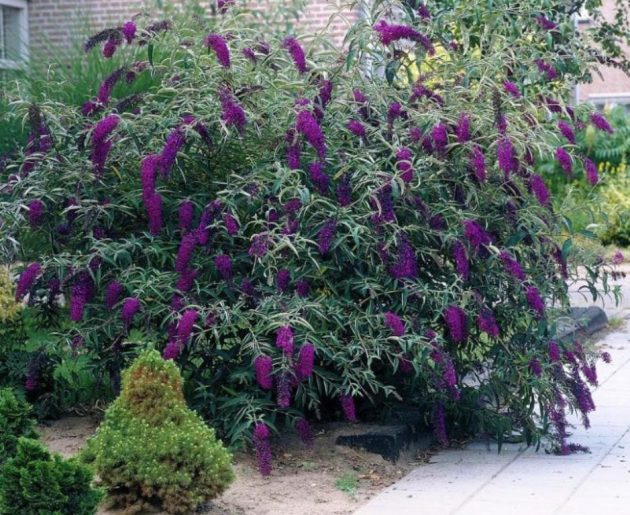
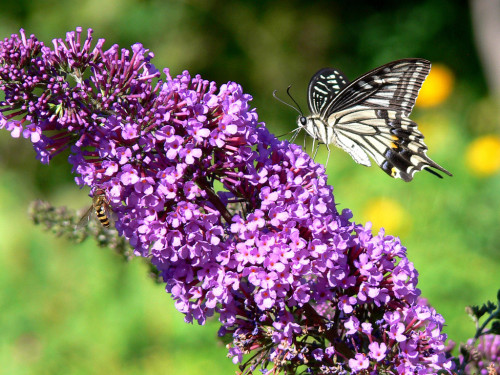
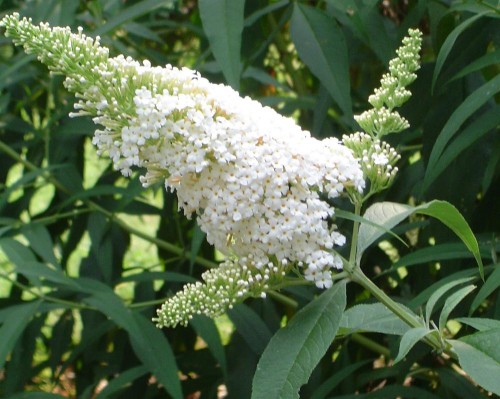
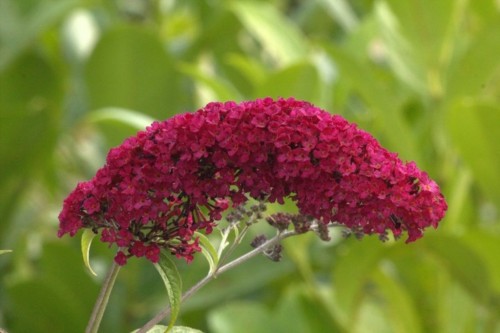
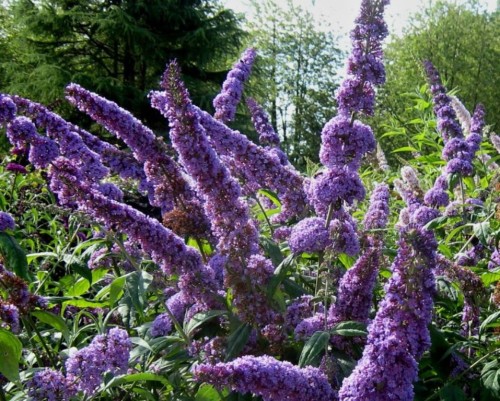
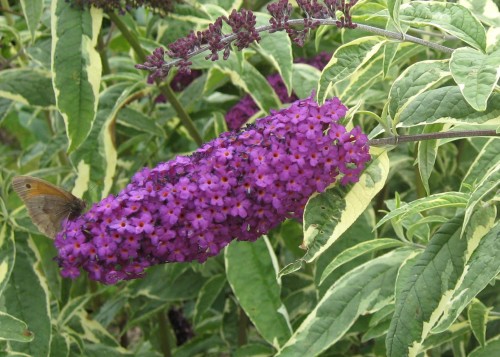
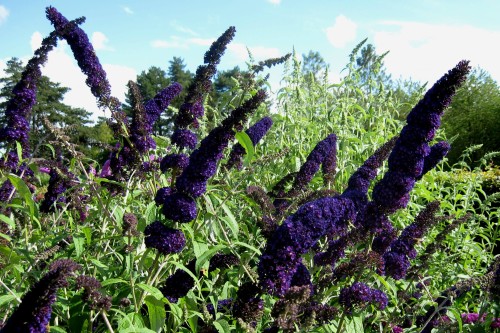
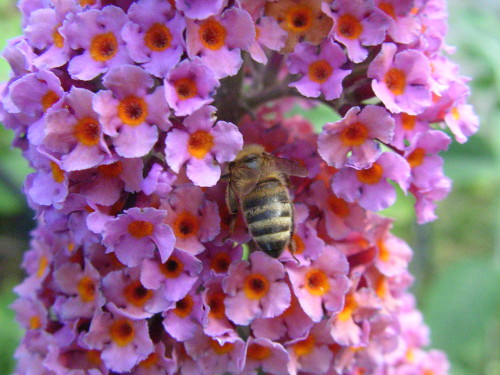
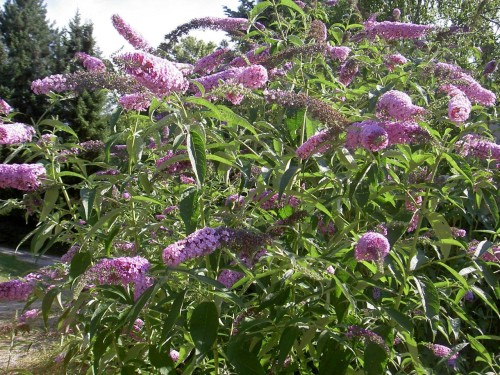
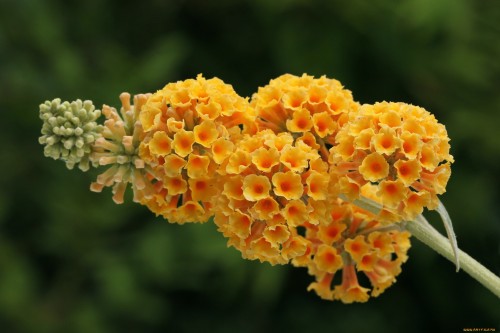
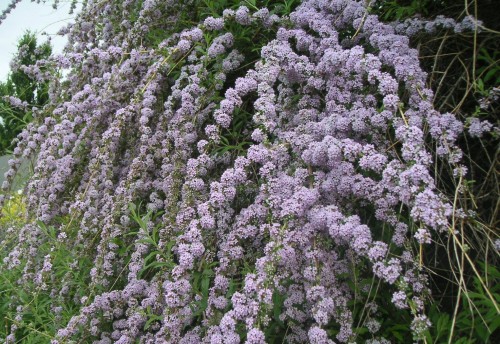
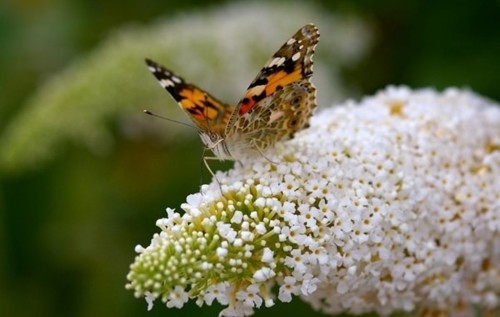
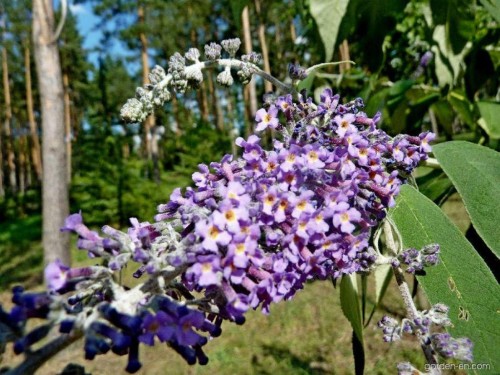
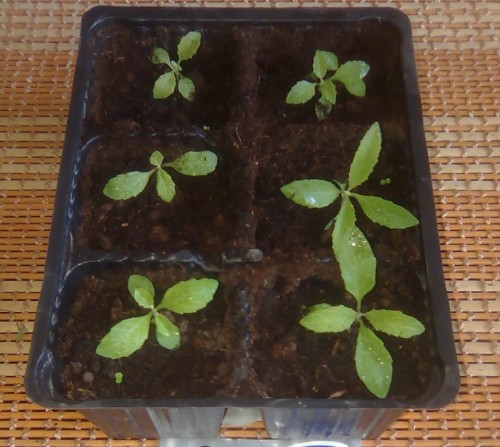
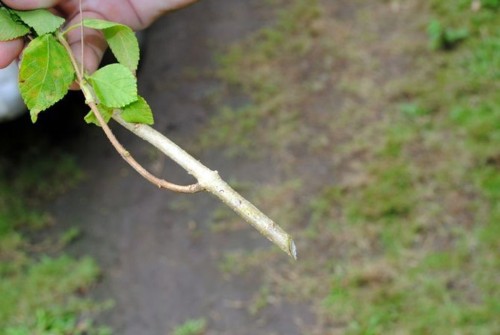
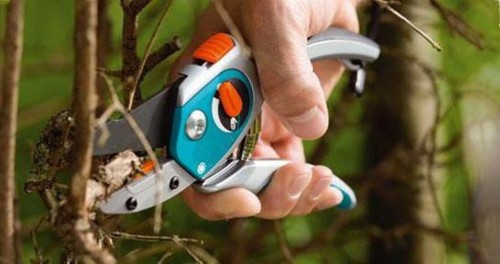
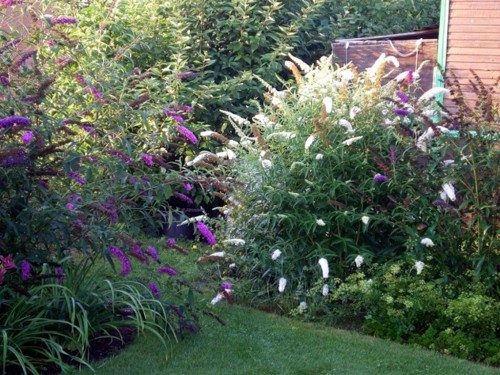

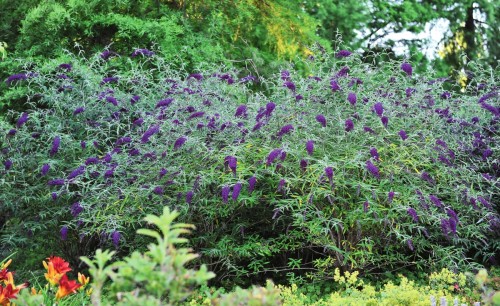
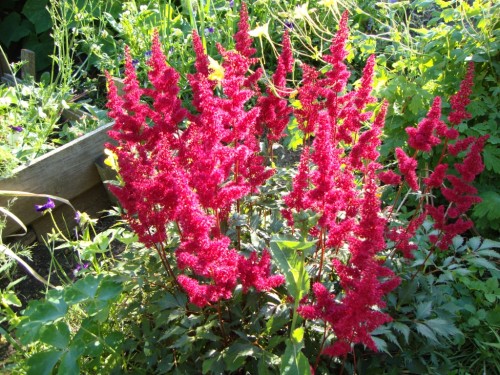
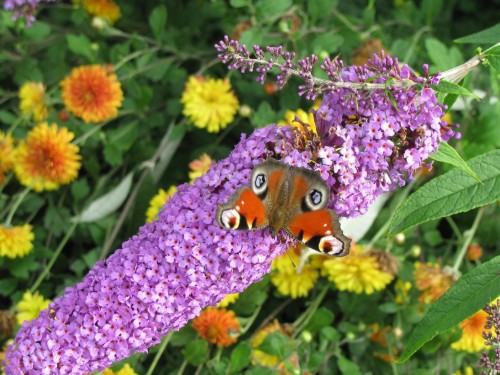
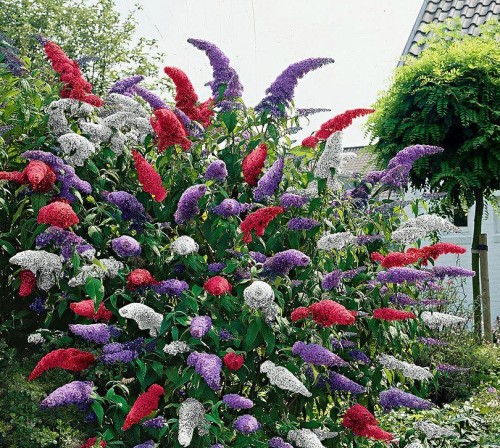
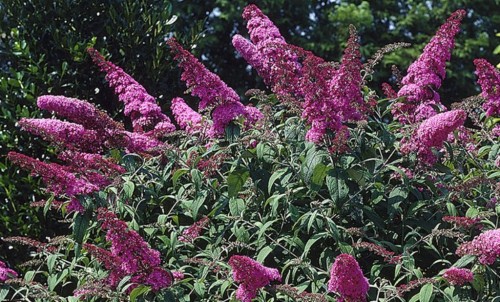












 Start a discussion ...
Start a discussion ...